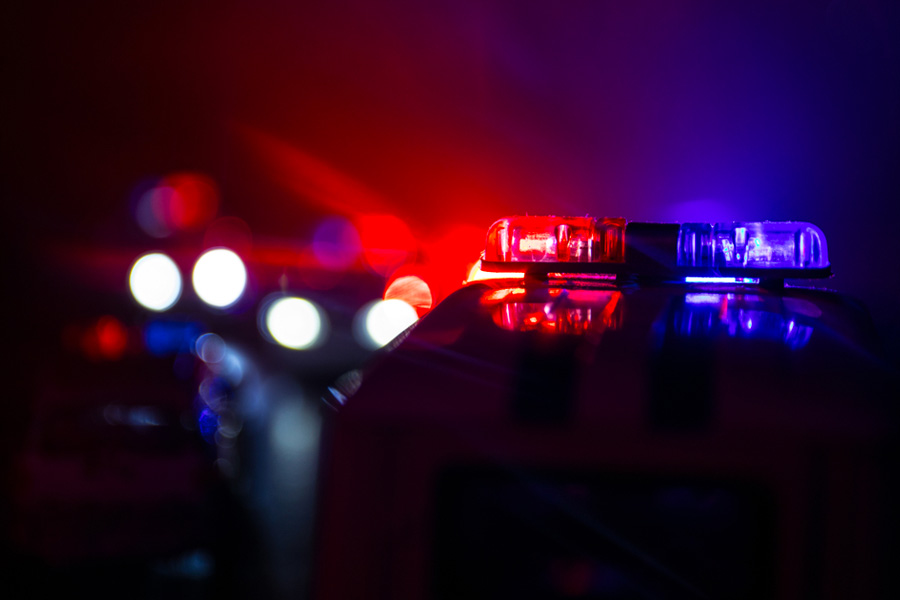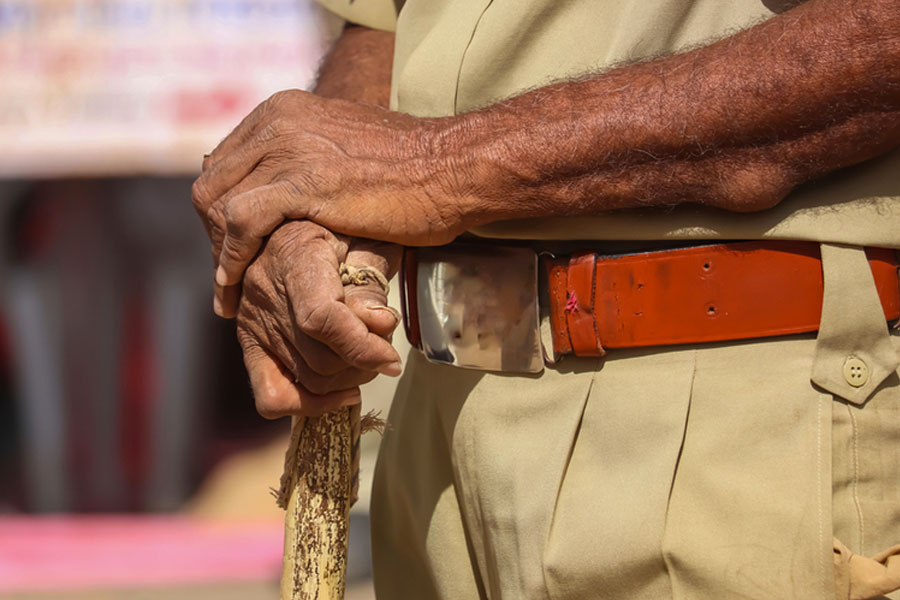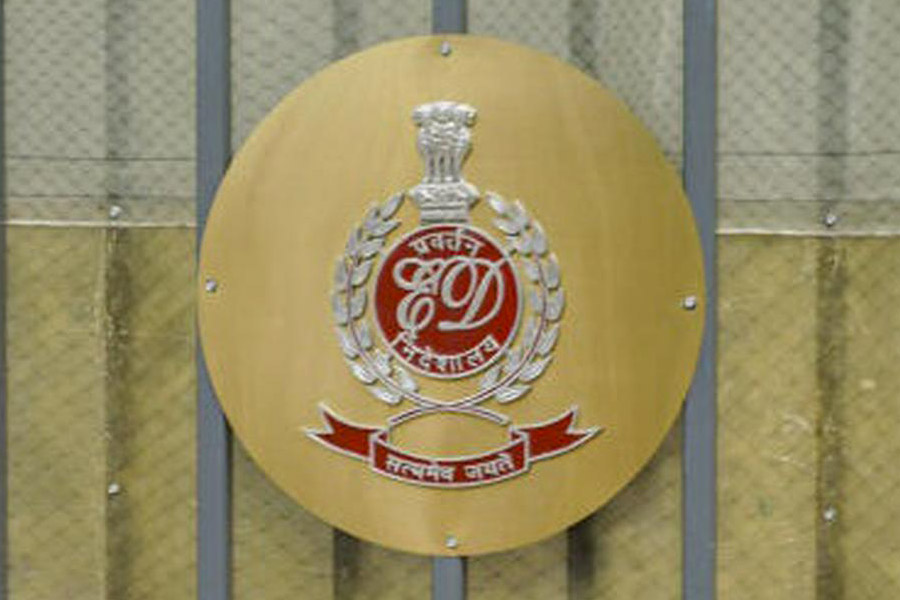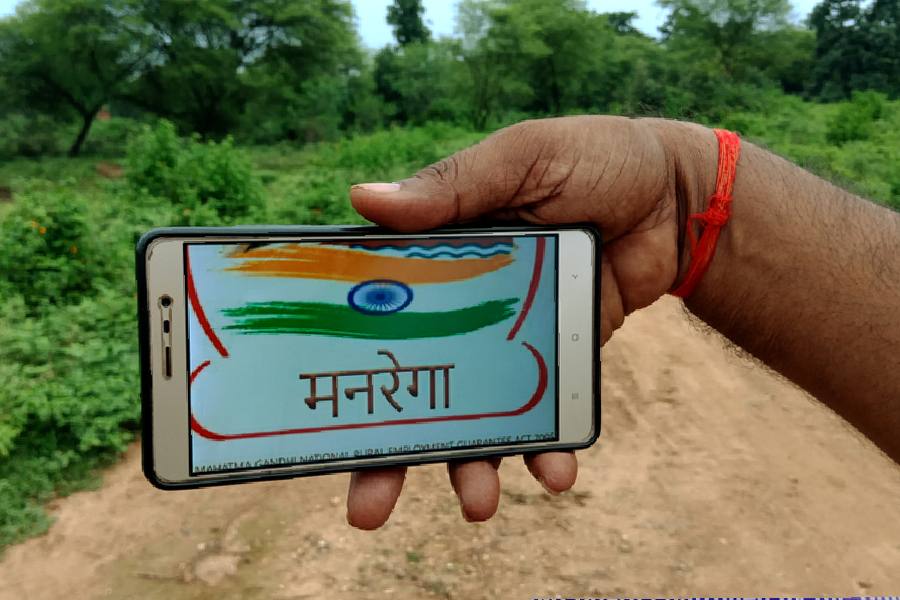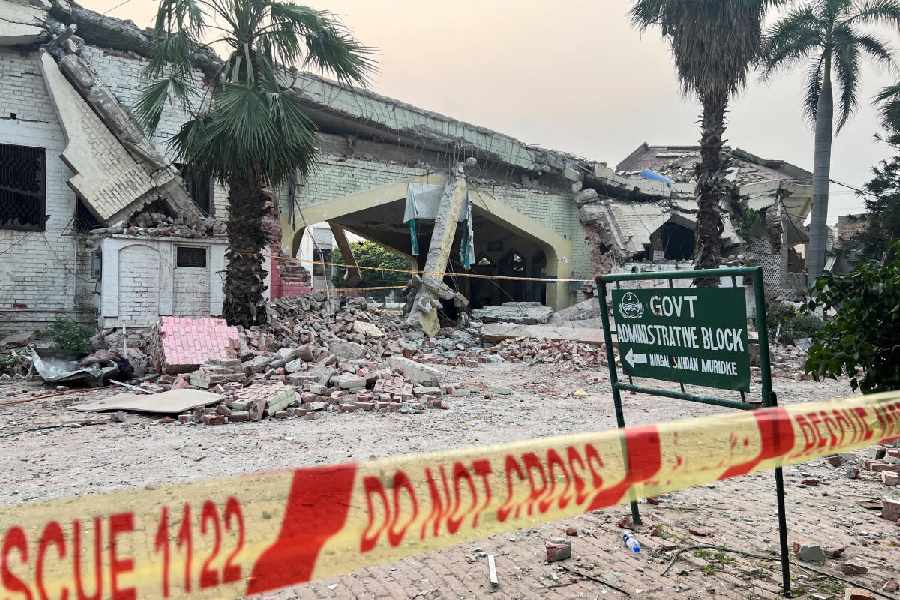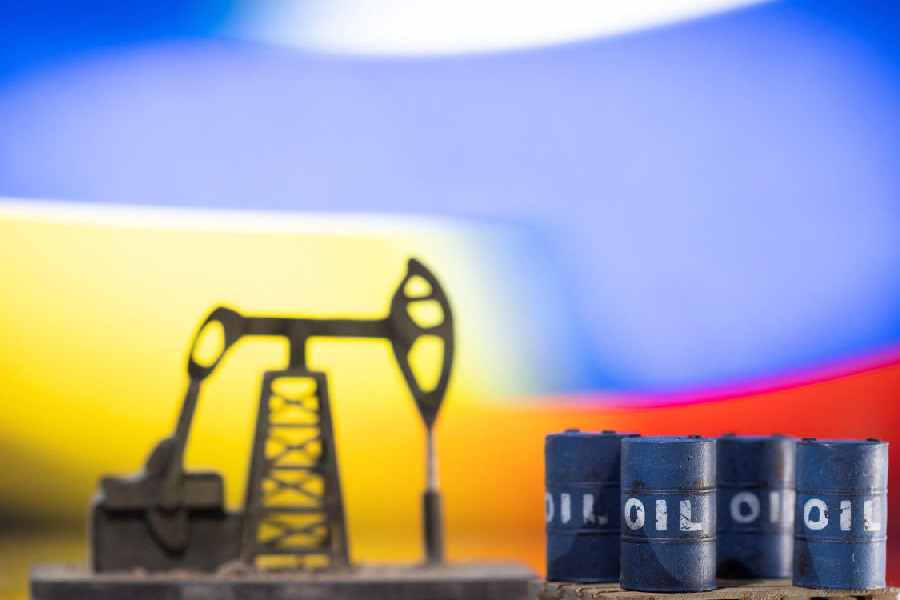 |
Calcutta, Dec. 9: Eighty-eight patients died at AMRI Hospitals smothered by smoke from an early morning fire today as they were pinned to their beds by their physical immobility waiting for a rescue that arrived too late in this city of unending horrors.
The fire in the upper basement of an annexe building of the private hospital was spotted sometime between 2.15 and 2.30am, pumping smoke into the wards on the second, third and fourth floors through the AC ducts. Nearly two hours later, at 4.08am, the fire brigade was informed by police who received a call from a neighbour on their 100 emergency line — and not from the hospital next to Dhakuria bridge, official records show.
The total toll at midnight stood at 90. Two nursing staff died trying to rescue patients, some of whom left behind marks of desperate efforts to escape. Tied loosely to a bed sheet, an apron lay in a super deluxe cabin on the second floor carrying evidence of an attempt to reach a barely foot-wide cornice below a shattered windowpane. Such a cabin here costs Rs 9,000 a day.
A civil defence official working inside the building, annexe 1, after the tragedy said: “The windows were sealed, the power had been switched off, it was pitch dark inside. And, of course, they were all patients.”
Many of the seven-storied annexe’s 164 inmates died on the fourth floor that housed the critical patients in intensive care units. They would have been the most helpless, possibly dying in their beds as carbon monoxide streaming out of AC vents filled their lungs.
Munmun Chakraborty, 36, who had undergone surgery on her fractured left foot, called her home at Kasba, asking to be rescued. Subhashish, her husband, said: “My wife called me at 5 and said the ward (on the second floor) had filled up with smoke. She could not move and said there was no one to help her.” Munmun could not be saved.
Police officers and neighbours from an adjacent shanty alleged that the handful of hospital staff who were on night duty fled once the fire started. But the hospital denied this: “No employee fled at the time of the fire…. The staff have been courageous, saving many lives.”
More patients died than were saved for reasons the hospital has not explained yet. The first among these is the apparent delay in calling the fire brigade. The fire alarm did not sound as the hospital had kept it switched off permanently on the grounds that patients tend to panic every time it goes off. The upper basement where the fire erupted was meant to be a car park but the pharmacy store was located there. The fire department had served a notice on the hospital to clear the space, setting a deadline of December 4 that has passed without compliance.
Power was cut off sometime after the fire started, plunging the wards into darkness and shutting the lift, which, a life-saver in normal times, had turned into a purveyor of death as smoke curled upwards through its shaft. The fumes from chemicals stored in the pharmacy and from paints, portable gas cylinders and diesel stocked for generators crawled up the staircase too, adding to the gusts pouring out of the ducts of the centrally air-conditioned building.
In the gloom and the smoke swirling inside rooms whose windows were sealed, the powerless patients were left to choke to death as the hospital did not seem to have an evacuation plan in an emergency. If it had one, there was no one to implement it. This is a hospital where daily charges begin at Rs 1,300.
Ajay Santra, 24, who was admitted to a ward on the third floor, said: “I realised I had to do something for myself. I started climbing down the stairs in great agony amid the thick veil of smoke. It was pitch dark in any case so I shut my eyes hoping they burn less. At each landing, I tried to get a sense of direction from the cries of patients.”
The police said the AMRI staff — some junior doctors, nurses and technicians, administrative and security personnel — initially tried to put out the fire on their own. A fire department official speculated that “maybe the fear that they hadn’t complied with the directive prompted the hospital not to inform the fire brigade, instead trying to douse the blaze”.
Local people from the shanties nearby alleged that when they tried to enter the hospital around 3am, the main gate of the annexe was closed. We climbed the wall and scrambled up to the scaffolding put up for construction work,” said Raju Bhandari.
Sridam Kayal, a slum-dweller who was among the first to enter the hospital, said: “It was dark and I couldn’t see anything. People were pulling my hands from both sides begging to be rescued.”
Chief minister Mamata Banerjee, who reached the hospital at 9.50am, said: “Death has no consolation. Those responsible will receive harsh punishment.”
She announced compensation for the families of the victims, arrest of the hospital’s owners and cancellation of its licence. The hospital will pay a compensation of Rs 5 lakh, the state government Rs 3 lakh and the Prime Minister Rs 2 lakh to the kin of the dead.
Six directors from the Emami and Shrachi groups that run the three AMRI hospitals surrendered at Lalbazar later. S.K. Todi, Ravi Todi, Prashant Goenka, Manish Goenka, Radheshyam Goenka and Dayanand Agarwal were arrested. A seventh, R.S. Agarwal, was arrested at BM Birla Heart Research Centre where he had been admitted.
S.K. Todi said: “We have surrendered at Lalbazar since we have done nothing illegal. All clearances, including that of the fire department, are with us.”
The health department has cancelled the licence of annexe 1, built in 2005 at a cost of Rs 120 crore.
When people leapt out of Park Street’s Stephen Court inferno in full view less than two years ago, Calcutta might have thought it had been visited by the worst of possible horrors. Now it knows worse.
SHOCK AFTER SHOCK
2.15am: Three upper floors at AMRI Hospitals, Dhakuria, start filling up with smoke
2.20: Fire alarms don’t work as they are kept switched off, to spare the annoyance caused by them going off every time there’s a little smoke. The water sprinklers fail
2.30: An attendant who lives in the adjoining slum calls up her family
2.30: Fire extinguishers are pressed into action. But there is no visible fire and the staff appear not to be trained in dealing with smoke. No one knows how to control the AC plant
2.45: About 50 people from the slum rush to the main entrance and are turned away by the guards
3.00: The slum residents cut through the barbed wire fence on the boundary wall and enter the premises
4.08: Call goes to fire brigade from the police headquarters at Lalbazar
4.15: Many hospital staff are said to have fled
4.30: Two fire engines arrive with manual ladders and no breathing apparatus
7.00: Two skylifts come
7.30: Five breathing apparatuses arrive
8.00: A Calcutta police disaster team joins the operation, five-and-a-half hours after the fire broke
9.50: Mamata arrives
10.00: Firemen break down a part of the basement wall and start flooding it
2.00pm: Fire personnel enter the basement but cannot proceed because of the smoke
3.27: AMRI directors R.S. Goenka and his son Manish surrender. They are arrested later along with S.K. Todi, his son Ravi, Prashant Goenka and Dayanand Agarwal, who also surrendered
8.30: Director R.S. Agarwal, who got admitted to BM Birla Hospital in the evening, is the last to be held. Agarwal remains in hospital, with two constables at his bedside
The graphic and the timeline are based on accounts of residents, hospital staff, police and fire personnel





